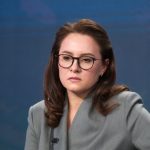Wall Street expects the Fed to cut interest rates in September and more to follow if the economy doesn’t slow down. Michael Gapen, head of U.S. economics at BofA Securities, recently joined Morning Brief live on Yahoo Finance to provide insight into what potential rate cuts could look like down the road.
Gapen believes that initially there will be a three-month discount cycle, that is, a gradual reduction. Gapen said in his statement:
“But obviously when you look further out, we can write these kinds of stylized baseline forecasts that assume a lot of things are going well. And I still think that’s true. The economy rarely develops smoothly in a straight line. So as we move towards 2025, as the elections are behind us and we know what policies we will pursue, our view may change. But I think in the beginning… it makes the most sense for the Fed to cut interest rates every three months.”
When asked about the pace of these interest rate cuts, Gapen said:
“We talk a lot about when the Fed will start cutting rates, but I think what’s more important to the street here, which I know you’ve written about as well, is the pace of that and what it might look like in a more realistic or accurate way.”
He also added:
“Very quickly here, the pace and the end point for the market will change. I think, at least initially, the view is that it will be a three-month cycle of reductions. It is also a gradual reduction. It normalizes the policy rate following the decline of inflation. Inflation is gradually slowing down, so “The reductions are likely to be gradual.”
Gapen also touched upon the risk of a sharper slowdown and said:
“Is a normalizing economy after the pandemic the same thing as a weak economy? I think the GDP numbers released yesterday should alleviate some of these concerns in the midst of a faster slowdown. I still think the economy is healthy and I think a normalizing labor market is not a weak market.”
He concluded his words as follows:
“The key for me here is to say that employment growth should be slowing, but it’s not because we’ve overemployed and firms are ready to downsize. Employment growth should be slowing because we’re where we want to be. It’s a very different dynamic. So, at least in the risk dynamics story “I think the GDP data should make the Fed less concerned about a sharp slowdown in the economy.”
*This is not investment advice.













